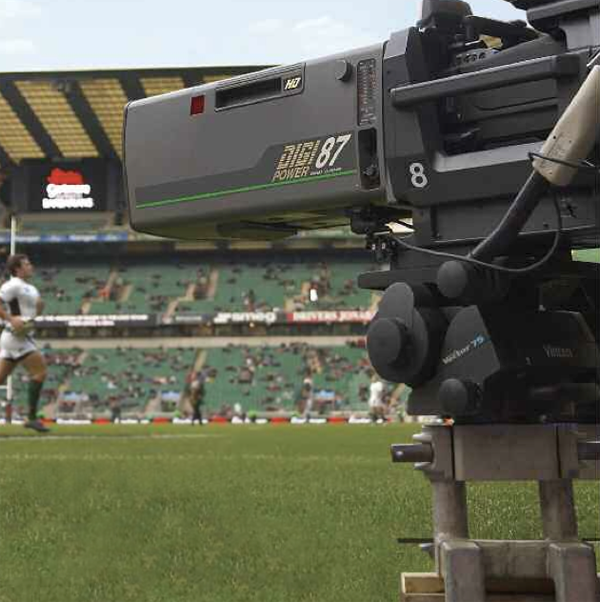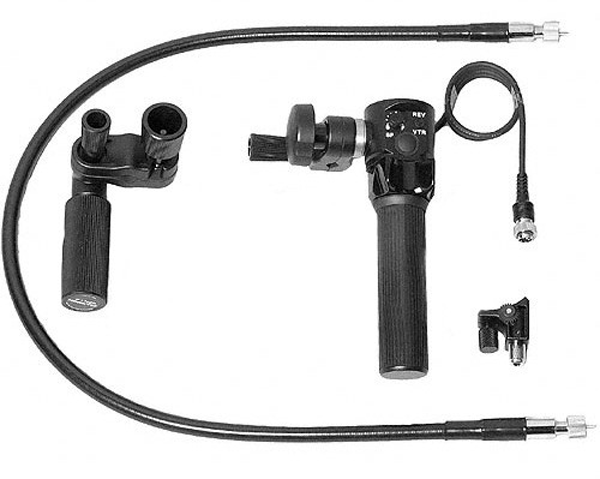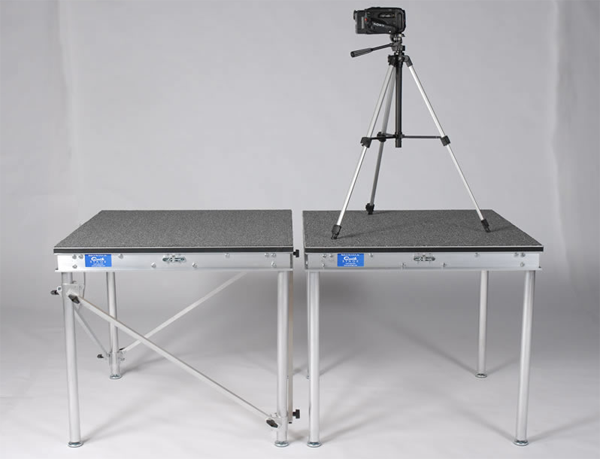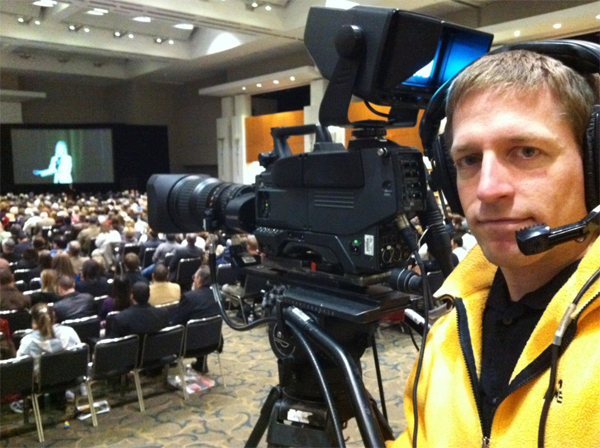What is IMAG?
Streaming Media Producer continues its "What Is...?" series tackling essential topics in the streaming media and live production world with a look at IMAG, or image magnification, a common and effective way of delivering instant video projection of speakers and performers at corporate, conference, and faith-based events. We examine the technical challenges, the required gear, and the preferability of producing separate feeds for projection and streaming of the same event.
Camera Support for IMAG Production at Live Events
When determining your camera setup for live event IMAG production, be sure you have the appropriate support system. Putting a 60-pound box lens on a lightweight ENG camcorder won't work if you have a tripod rated for 10 pounds. The proper tripod will cost well over $5,000, and very often weigh 20 or more pounds.

Vinten tripod head
You'll also need a "studio kit," with remote controls for the focus, zoom, and other lens features. I'll get to why in a moment.
Studio kits vary in contents and price depending on whether you are suing a Canon lens or Fujinon lens. Those are the two biggest players in big lenses. If you have a camcorder with a built-in lens that you will add a doubler too, then you can look for Control-L (LANC) controllers or any number of remotes that work with your camcorder.

Fujinon studio kit
When setting up a long lens system, you'll need as stable a foundation as possible. If you're shooting on cement, you should generally be fine. But with a really long zoom, even the most minor little bounces can look like an earthquake on the screen.

A shooting platform from QuickStage.com
If you're in a conference room and setting up some flat stage pieces to position the camera on, be sure to set up one for the camera, and a separate one right behind it for the camera operator. Do not connect them. The operator will stand/sit on their own stage and every movement they make will NOT shake the camera platform--if you keep them separate. Then also make sure you have stanchions around the camera platform to keep people from bumping into it, leaning on it, sitting on it, using it as a table (all of which I have had happen to me) during the events.

Ambit Long Lens © Anthony Burokas
Then the operator reaches over to the camera, and uses the studio kit controls on the two handles of the tripod to delicately control the camera. Pan, tilt, focus, and zoom can all be controlled delicately with fingertip touches. There are situations where something so small as a 1-degree movement can make the person on stage vanish from camera view. This is why you use the lightest touch with remote controls.
If you try and stand on the same platform and use your hands right on the lens, you can count on very shaky video.
Related Articles
Streaming Media Producer kicks off its "What Is...?" series tackling essential topics in the streaming media production world with a look at live switching, touching on the differences between switching and mixing, assembling the components and crew of a live switch, and the basics of "punching" a multi-camera show or event for live delivery.